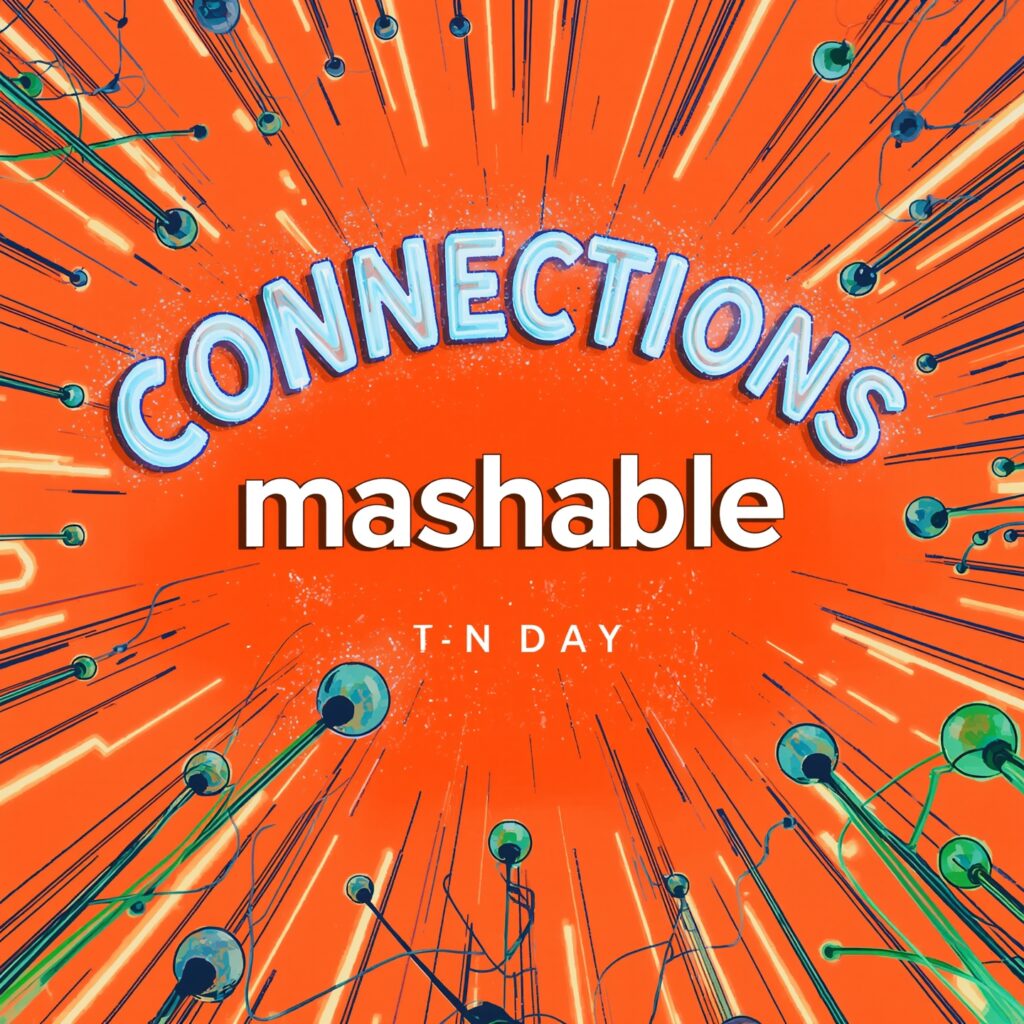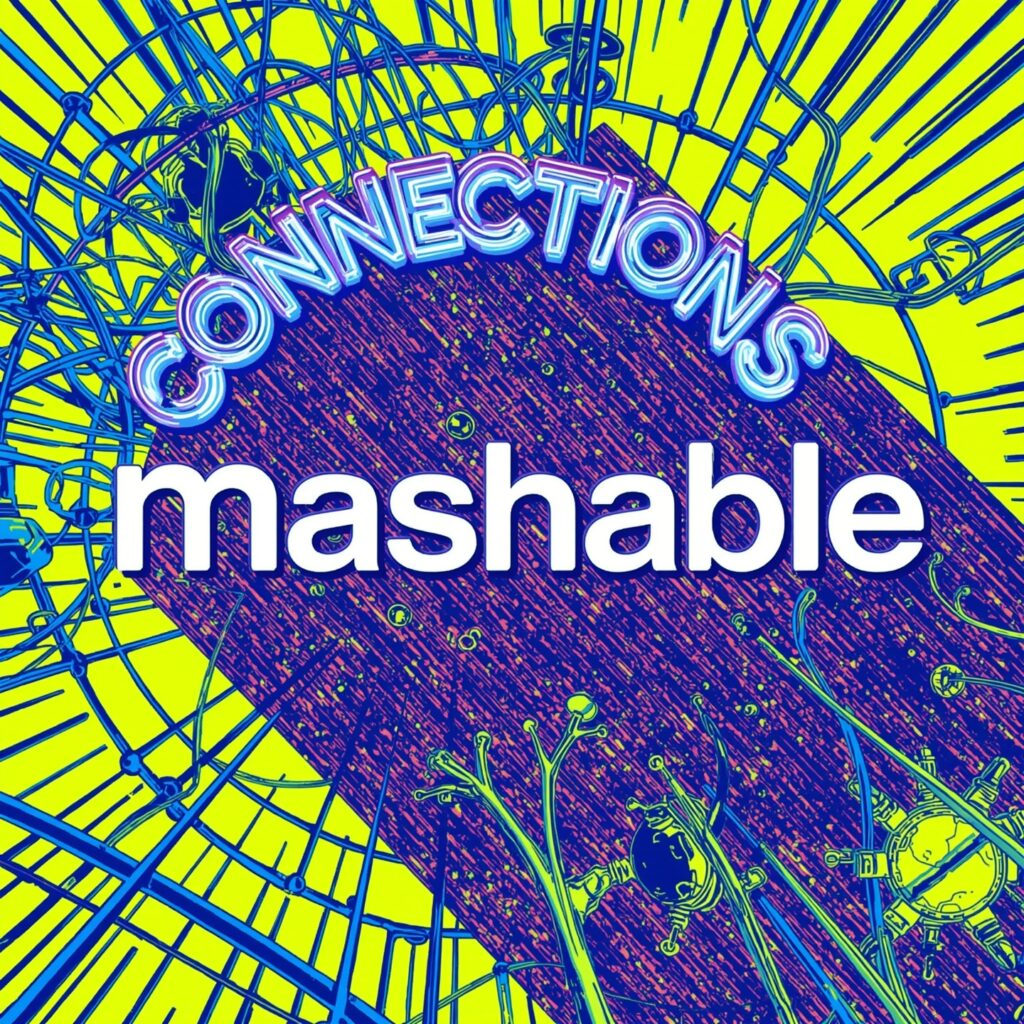The New York Times Connections puzzle has speedy grow to be a day by day mental exercise for phrase lovers across the kingdom. With its smart design and addictive layout, the game demanding situations gamers to sort 16 apparently unrelated phrases into 4 wonderful companies. It’s a real check of important thinking, vocabulary depth, and lateral reasoning.
As this phrase game grows in popularity, so does the demand for beneficial, non-spoiler assist. That’s where assets like Mashable’s every day suggestions are available in. These subtle clues are crafted to nudge you gently within the right direction—imparting steerage without revealing answers. For gamers who need to improve their talents with out losing the pleasure of discovery, these recommendations are a valuable tool.
This manual dives into how you could use these suggestions effectively while strengthening your own puzzle-solving techniques. Whether you’re simply beginning or you are already a seasoned word recreation enthusiast, mastering to interpret oblique clues even as maintaining a methodical approach can substantially enhance your experience. With every puzzle you remedy, you may not simplest sharpen your language instinct but additionally revel in the delight of mastering one among today’s most attractive each day challenges.
Why the NYT Connections Puzzle Has Become a Daily Habit for So Many
At first look, the New York Times Connections puzzle seems deceptively simple: institution sixteen phrases into 4 units primarily based on shared issues. But after you begin, you quick understand the task runs lots deeper than it appears. This every day sport faucets into some thing essential in human nature—our instinct to recognize styles and make sense of statistics.
What maintains gamers coming returned isn’t just the fun of sorting words. It’s the mental stimulation and reward that come from cracking a cleverly constructed puzzle. According to puzzle professionals and platforms like Mashable, Connections turns on key areas of the brain tied to language, common sense, and choice-making. Successfully identifying a hard and fast of related phrases offers a fulfilling experience of achievement, nearly like solving a mini thriller.
Another notable aspect of the game is its integrated shape. Players are allowed as much as 4 wrong tries earlier than the puzzle ends. This subtle stress provides simply enough urgency to hold the revel in attractive—without tipping over into frustration. It’s a smart stability that maintains gamers mentally alert, whilst nevertheless making the puzzle feel plausible.
The Role of Daily Clues: How Mashable Keeps the Fun Alive
One motive the Connections puzzle has grown this kind of devoted following is the thoughtful support furnished by means of platforms like Mashable. Their each day guidelines don’t just throw out answers—they’re designed to decorate your problem-solving abilties at the same time as keeping the pleasure of discovery.
Mashable’s technique stands out due to its tiered clue machine, which lets in gamers to get help at their own tempo. Instead of jumping instantly to the answer, guidelines are presented in layers:
- General themes that manual your wondering without being too revealing,
- Contextual nudges that hint at how sure phrases are linked, and
- Elimination strategies that help you identify which mixtures don’t belong collectively.
This device encourages important questioning and empowers players to research as opposed to depend absolutely on outside assist. It’s a strategic technique that makes solving each puzzle experience even more worthwhile.
More Than a Game: A Tool for Cognitive Growth
What makes Mashable’s clues specifically powerful is their depth. The editors don’t forestall at surface-level phrase institutions—they frequently encompass cultural context, language records (like etymology), and memory hints. These greater layers offer a mini academic second along the sport, subtly enriching your vocabulary and broadening your questioning.

Over time, often attractive with the puzzle and using properly-crafted hints can certainly sharpen your mental agility. You’ll begin noticing greater nuanced connections between words, emerge as extra strategic in the way you institution terms, and improve your basic reasoning abilties.
So while Connections may additionally look like just every other word sport, its lasting attraction lies in how it combines enjoyment with non-public increase. And with clever equipment like Mashable’s daily suggestions, the journey turns into not best more fun—but also greater meaningful.
Cracking the Code: How NYT Connections Uses Color to Guide Puzzle Difficulty
The New York Times Connections puzzle stands out for its clever use of a colour-coded issue system, which allows gamers recognize the complexity of each word grouping. This design now not best adds shape to the sport however additionally encourages thoughtful trouble-fixing as players paintings their way from easy to extra challenging classes.
What Do the Colors Mean?
Yellow categories are normally the maximum truthful. These businesses regularly revolve around easy, acquainted subjects like “Types of Fruit” or “Household Items.” Because they draw on simple, regular knowledge, most gamers can become aware of them quickly—especially with the occasional nudge from trace companies like Mashable, which focuses on giving subtle help with out revealing the entire solution.
Green and Blue groupings improve the bar through requiring more nuanced wondering. These classes often consist of conceptual hyperlinks or less obvious connections among words. They mission gamers to suppose past surface meanings and rely extra on instinct, context, and enjoy with language.
The hardest tier of the puzzle is represented by purple companies. This class often includes wordplay, double meanings, difficult to understand trivialities, or niche references. Even the most experienced solvers can find those intricate, that is why many turn to Mashable’s daily suggestions for gentle steerage once they experience stuck. These clues assist preserve the challenge while keeping frustration in check.
Understanding this coloration machine permits players to paintings more efficaciously—fixing the less difficult units first and saving the maximum complicated for closing. It’s a strategic advantage that helps shape your thinking and preserve treasured guesses.
Pro Tips for Solving NYT Connections Like a Pro
Solving Connections always takes extra than only a robust vocabulary—it requires a balanced blend of method, recognition, and staying power. Here are a few demonstrated guidelines to elevate your puzzle sport:
1. Scan All the Words First
Before you make any selections, take a second to examine through all sixteen words. Look for patterns, themes, or phrases that experience related. Making intellectual or written notes of possible groupings can provide you with a clearer path ahead and decrease the risk of losing guesses.
2. Create Mini Word Clusters
Experienced players regularly advise forming small clusters of phrases that appear related—even in case you’re not yet assured they form a complete institution. This technique can help isolate outliers and display which phrases might belong to extra obscure or abstract categories (often discovered in the Blue or Purple groupings).
3. Use Elimination to Your Advantage
Start with the aid of fixing the class you experience most assured about. This narrows the ultimate word pool and makes it easier to identify diffused connections. However, be cautious approximately locking in answers too fast—each wrong guess brings you towards the 4-strike limit. Mashable frequently emphasizes the price of methodical questioning, encouraging players to take their time, test their reasoning, and best affirm corporations after they’re fairly certain.
See Also : Is Zinchanmanga Worth It? Let’s Find Out
4. Stay Flexible and Avoid Tunnel Vision
It’s clean to get stuck focusing on one capacity institution, however spending an excessive amount of time on a unmarried concept can cause you to overlook less complicated wins someplace else. Take breaks, revisit words with clean eyes, and allow your brain time to recalibrate. A flexible mindset regularly results in better effects than brute-pressure guessing.

How to Use Mashable’s Clues Wisely (Without Spoiling the Game)
While a part of the pleasure of Connections is solving the puzzle in your personal, knowing while and how to use pointers—like those from Mashable’s day by day Connections guide—can assist with out doing away with the amusing.
A Strategic Approach to Using Hints
Rather than leaping straight to the most precise clue, attempt following a tiered method:
- Re-have a look at the puzzle with a sparkling perspective—now and again a short wreck or converting your technique can reveal connections you didn’t initially see.
- Use mild pointers from Mashable to get mild thematic direction. These often encompass extensive clues that help orient your questioning with out giving anything away.
- Only seek advice from particular clues in case you’re absolutely stuck. Mashable’s deeper tips frequently offer smart nudges or monitor one complete group—however the use of those too early can eliminate the mission.
This method permits you to keep the integrity of the puzzle whilst also benefiting from outside perception. Over time, selectively the use of hints can enhance your sample recognition, vocabulary, and standard puzzle-fixing skills, making you a more assured and capable player.
How Weekly Patterns in NYT Connections Can Improve Your Game
As you dive deeper into the New York Times Connections puzzle, you can begin to observe a diffused however intentional rhythm to how the challenges evolve throughout the week. This isn’t simply accident—it is a deliberate strategy utilized by the puzzle creators, and spotting those traits can supply players a powerful aspect.
Early Week = Easier Wins
The riddles are usually easier to solve on Monday and Tuesday, the first two days of the week. They often function familiar subjects, together with “Fruits,” “Colors,” or “Kitchen Utensils.” These gadgets are designed to assemble player self warranty, particularly for those who are new to the game or playing casually.
Mid to Late Week = A Steady Climb in Complexity
As the week progresses, so does the issue. From Wednesday thru Saturday, you may expect to stumble upon greater abstract groupings, consisting of:
- Clever wordplay and puns
- Double meanings
- Pop subculture references
- Obscure or academic vocabulary
These puzzles require deeper notion and broader expertise, that is why structures like Mashable frequently offer every day recommendations tailored to help with out spoiling the solution.
Weekend Challenges Often Reflect Cultural and Seasonal Themes
Veteran gamers and hint carriers like Mashable have observed ordinary weekend patterns:

- Entertainment subject matters: Groupings may also reference films, books, or TV indicates.
- Seasonal motifs: December might carry holiday-related groupings, at the same time as summer puzzles regularly trace at tour or climate.
- Timed occasions: Expect sports-associated terms in the course of playoff seasons or educational references around the begin of the college yr.
Understanding those cyclical trends will let you assume positive types of word groupings and enhance your accuracy over the years.
Next-Level Tactics for Solving NYT Connections
Advanced players regularly pass past fundamental phrase association by means of applying strategic puzzle-fixing techniques. Here are a few tactics that can take your competencies to the following level:
1. Reverse Engineering
Start with the list’s least recognizable phrase. Ask yourself: what should this word be related to? Often, the most difficult to understand phrases are a part of the most difficult categories, together with the red institution, which frequently consists of summary or misleading connections. Working backwards from those “outlier” phrases can now and again screen whole sets.
2. Anticipating Puzzle Structure
Over time, you’ll start to recognize commonplace puzzle codecs—for instance, a truthful yellow group observed by using extra summary blue or crimson ones. Anticipating this development will let you adjust your approach and avoid burning through guesses too speedy.
3. Pacing and Pattern Recognition
Don’t rush. Mashable’s puzzle professionals often remind gamers to pace themselves and re-compare guesses cautiously. Many puzzles encompass decoys—words that appear to healthy a group but are intentionally misleading. Use logical reasoning, and when doubtful, take a step again and think again.
MCQs:
1. What is the NYT Connections puzzle’s main objective?
A) Solve a crossword grid
B) Match words to images
C) Group 16 words into 4 related categories
D) Fill in missing letters in a phrase
Answer: C
2. Why do many players turn to Mashable’s hints for help with the Connections puzzle?
A) To get direct answers
B) To skip the puzzle entirely
C) To receive non-spoiler guidance
D) To increase the number of guesses
Answer: C
3. What does the yellow category in NYT Connections typically represent?
A) Abstract or difficult wordplay
B) Pop culture references
C) Basic, straightforward groupings
D) Seasonal vocabulary
Answer: C
4. How does Mashable present its clues to avoid spoiling the puzzle?
A) Only posts clues after the puzzle is solved
B) Uses a tiered system of gradually more helpful hints
C) Offers complete answers at the start
D) Provides no clues at all
Answer: B
5. What makes the purple category in the puzzle especially challenging?
A) It includes only common objects
B) It is always solved first
C) It involves wordplay, double meanings, or obscure references
D) It includes numbers instead of words
Answer: C
6. According to the article, how does regular engagement with the puzzle benefit players?
A) Reduces vocabulary over time
B) Decreases memory retention
C) Enhances cognitive skills and pattern recognition
D) Causes puzzle fatigue
Answer: C
7. What strategic advice is given for players to improve their solving ability?
A) Always start with random guesses
B) Focus only on the hardest words
C) Use elimination and grouping tactics
D) Skip yellow categories
Answer: C
8. What weekly trend is observed in NYT Connections puzzles?
A) Random difficulty every day
B) Easy puzzles on weekends only
C) Increasing complexity from Monday to Saturday
D) Decreasing challenge by the end of the week
Answer: C
9. What tactic is known as “reverse engineering” in puzzle solving?
A) Solving the easiest group first
B) Guessing all possible word pairs
C) Starting with the most unfamiliar word to identify its group
D) Using Mashable hints before reading the puzzle
Answer: C
10. How does the NYT Connections puzzle design subtly motivate players to stay engaged?
A) Unlimited guesses make it relaxing
B) Four-strike limit adds just the right amount of pressure
C) It repeats the same words daily
D) It gives rewards for perfect scores
Answer: B
Summary of the Article:
The New York Times Connections puzzle has turn out to be a famous each day brain teaser that challenges gamers to organization 16 reputedly unrelated phrases into 4 wonderful categories. Its smart design appeals to language fans with the aid of combining common sense, pattern reputation, and lateral wondering.
The puzzle’s structure—allowing handiest four incorrect guesses—adds simply sufficient stress to keep players engaged without overwhelming them. To support users without spoiling the fun, structures like Mashable provide tiered day by day tips that assist gamers suppose severely and solve puzzles independently.
These clues go beyond basic word associations by using incorporating cultural references, etymology, and reminiscence aids, making the sport both exciting and academic. The puzzle also makes use of a colour-coded system (yellow = simplest, red = toughest) to manual trouble, and trouble increases via the week—starting simple and turning into more complicated by means of Saturday.
Read More About News At Cento magzine

